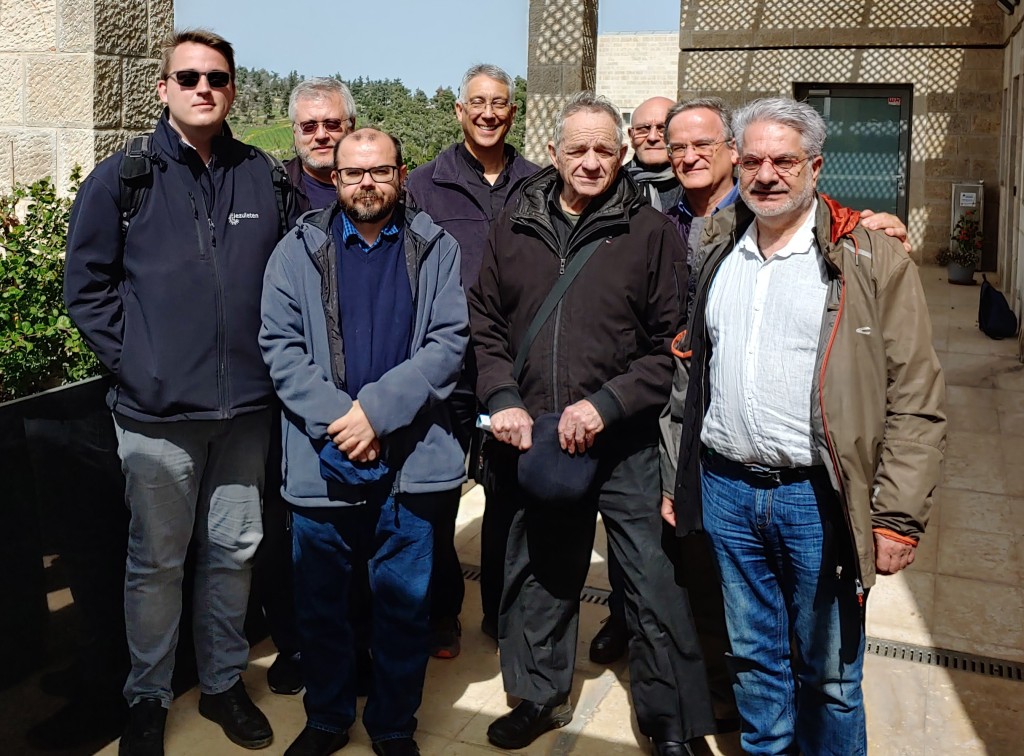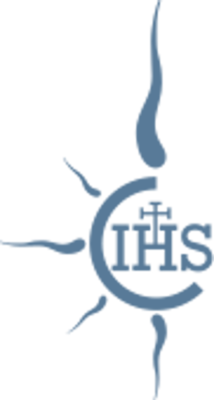In the Church of Jerusalem, the scripture account of the road to Emmaus thematically represents the Synodal process, asked for by the Holy Father, Pope Francis. The Jesuits in the Holy Land spent a morning and afternoon in recollection in the town of Abu Ghosh, one of the possible locations of Emmaus, to reflect on our discipleship and discuss the questions of today’s world and church.

The first stop was at the Saxum Visitor Center, located along what tradition calls the road to Emmaus. Although once a Roman road to Jaffa, today it is a hiker’s trail that ends near Emmaus-Nicopolis. Almudena Romero, the center’s director, guided us through the modern, hillside center. It offers an interactive, multimedia experience of the pilgrimage sites around the region, allowing pilgrims to trace out the paths and times of salvation history. The outer courtyard allowed the Jesuit community to follow the historical unfolding of the Old Testament and connect the historical timeline of the ancient world. The sculpted courtyard floor mapped out the Near East and Mediterranean region with the journeys of both the Israelites and Jesus marked out. Entering the complex, Almudena Romero worked the interactive screens to help us visualize the Nativity, the Nazareth of Mary and Joseph, the Temple of Jesus’ day, and the path to his death and resurrection. In effect, the center and presentation opened up the scripture for us. We were on the road to Emmaus.
The community then made a short drive to the retreat center of the Sisters of St. Joseph of the Apparition in Kiryat Yearim, the Sanctuary of Our Lady Ark of the Covenant. Fr. David, Jesuit community superior, who is the coordinator of the Synod for the Church in the Holy Land, took questions about the Synod process and then asked community members to use the rest of the morning to review and reflect upon the questionnaire for religious that had been formulated for the diocesan phase of the Synod. The questionnaire was adapted from one used by the Chaldean Church in Iraq. Questions included subjects such as commitment to the local church, the listening capacity of the church, openness to opinions, the role of liturgy in faith life, the exercise of authority, the witness of faith, and so on. How is the Lord leading us in this time and place?
After lunch, a fusion of Near Eastern and Asian plates, the community members gathered to discuss their insights about the world and the church today. The discussion was varied and extensive: living the faith in the context of the Holy Land, serving pilgrims, the question of clericalism, the role of women, Mass attendance among Catholics, Christian anthropology, Jesus’ Incarnation for today’s youth, etc. The local Synod committee will receive the community’s responses.
We then celebrated the Sunday liturgy with the presence of Our Lord in the Word and Blessed Sacrament—on the road to Emmaus.

Leave a comment